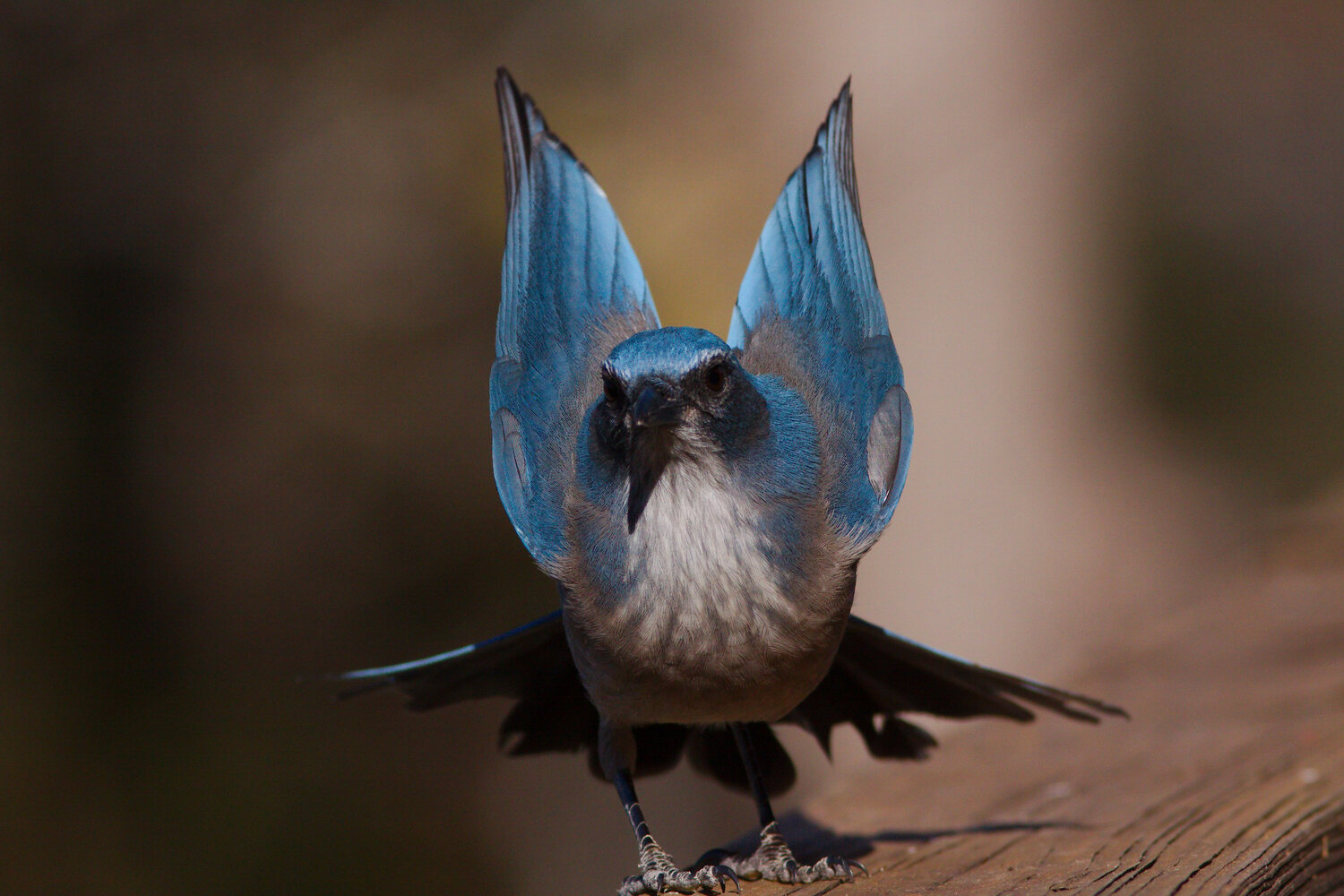Bird of the Month: California Scrub Jay
By Andy McCormick
PC: Gil Eckrich/Audubon Photography Awards (California Scrub Jay)
Scientific Name: Aphelocoma californica
Length 11.5 in
Wingspan 15.5 in
Weight 3 oz
AOU Band code CASI
In the summer of 2016 the American Ornithologists’ Union (AOU) reviewed the status of the Western Scrub-Jay and decided to split off two of the subspecies into two “new” species, the California Scrub-Jay (Aphelocoma californica) and Woodhouse’s Scrub-Jay (A. woodhouseii). This split had been anticipated for several years because the two former subspecies barely overlapped their ranges and hybridization was rare (See range maps). The two species also have consistent differences in voice, habitat, behavior, and morphology (Retter).
California Scrub-Jay Comes to Washington
What is now the California Scrub-Jay has expanded its range into Western Washington. The California is the more coastal species and darker in overall color. The blue is deeper and contrasts with the white belly. The back is gray. It has a sharply-defined breast band. By contrast the Woodhouse’s is a duller blue with grayish underparts, a grayish-blue back, and a faint breast band (Sibley).
These two species share the genus Aphelocoma with the Florida Scrub-Jay (A. coerulescens), the Island Scrub-Jay (A. insularis), and the Mexican Jay (A. untramarina). Aphelocoma means smooth hair, from the Greek, apheles, smooth, and kome, hair of the head, referring to the fact that these birds have no crest (Holloway). This species was first collected in California, hence the species name. Jay is from the French geai, a jay. It is thought the name is onomatopoeic for its call (Holloway).
Cached Food Disperses Trees
The California Scrub-Jay has an omnivorous diet of grasshoppers, beetles, bees, wasps, ants, caterpillars and other insects, and in winter it eats acorns and seeds. At times, it will eat other birds’ eggs and sometimes nestlings. The California Scrub-Jay scatterhoards (stores individually) surplus food items for later consumption (Curry, et al). The caches can consist of acorns, animal parts, human food such as French fries, and non-food objects. The birds do not recover all of their caches allowing acorns and seeds to sprout, thus aiding the dispersal of future food sources. California Scrub-Jays will also parasitize caches of other birds including stealing nuts stored by Acorn Woodpeckers.
Flocks of Floaters
The California Scrub-Jay is a permanent resident of its territory, which a mated pair will defend year-round. It usually nests in oak trees, but will also use other trees. Both sexes build the nest about 20 feet above the ground. Usually 4-5 eggs are deposited and incubated only by the female. The hatchlings are born naked and dependent, and need regular feeding by parents for up to two months after fledging (Curry et al). First flight is usually several weeks after fledging.
In the fall and through the winter, immature birds accompany the parents and are often joined by floaters (non-breeding adults) forming flocks of up to 20 birds. Populations of California Scrub-Jays are stable and no conservation measures are used.


